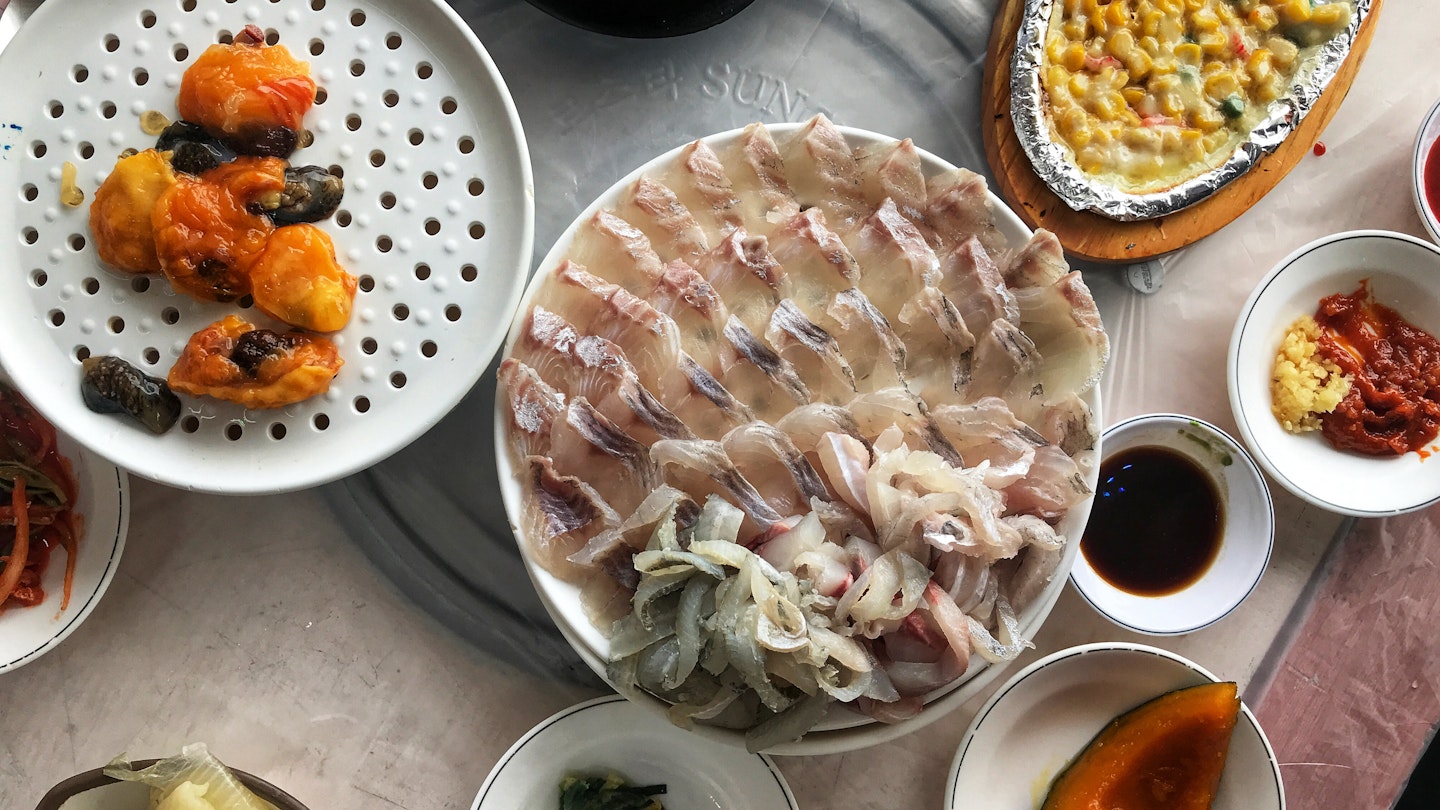Discover Busan’s Culinary Delights
The culinary landscape of Busan – South Korea’s second city – is marked by lively markets, iconic street food, and local variations of Korean fare. Thanks to its oceanside location, the seafood is second-to-none.
With stellar coastline views, dynamic nightlife, and a sophisticated arts scene, it’s no surprise that Busan is regarded as one of Korea’s top holiday spots. Prepare your taste buds and get ready to explore Busan’s one-of-a-kind dishes.
Dwaeji gukbap (돼지국밥)
Busan’s most emblematic dish, Dwaeji gukbap, is a humble yet hearty stew featuring thinly sliced pork, rice, and spring onion in a milky broth. The dish allows for customization through various banchan (side dishes), like onions, hot peppers, and kimchi, enhancing the flavor profile.

Located in Jungang-daero, known as Dwaeji Gukbap Alley, numerous restaurants specialize in this beloved dish, making it suitable for any meal – from breakfast to a post-party pick-me-up. Expect to pay around ₩7000 at popular spots.
Milmyeon (밀면)
After soaking up the sun on Busan’s amazing beaches, cool down and fuel up with milmyeon. This chilled noodle soup features twisted wheat noodles in a frosty, meat-based broth with visible chips of ice.

The dish is served in a metal bowl, adorned with julienned vegetables and topped with sliced pork and a half hard-boiled egg. Use scissors that come as standard utensils to make it manageable as the ice melts.
Hoe (회)
Hoe, pronounced like ‘when’ without the ‘n’, consists of thinly sliced, mild white fish, akin to sashimi, and comes with an array of banchan. It’s deliciously complemented by chogochujang or ssamjang.

A proper hoe meal typically includes rice and a spicy maeuntang stew made from leftover fish parts. Adventurous diners can try sannakji (longarm octopus) or gaebul (the intriguingly named ‘penis fish’) for an exciting experience.
Naengchae jokbal (냉채 족발)
In Busan, you’ll find streets dedicated to food. One highlight is naengchae jokbal, or chilled pig feet, served in Bupyeong-dong’s Jokbal Golmok. The preparation involves steaming pork feet with various seasonings, then serving them cold with jellyfish and crab meat.
This delightful dish is not only savory but brings potential hangover relief thanks to its amino acid content. Prices typically hover around ₩30,000, serving three to four diners.
Eomuk (어묵)
Another local favorite is eomuk, or fishcake celebrated as a top street food in Busan. Made from salted white fish, it comes in diverse shapes and sizes, commonly skewered in broth or served in eomuk guk.

You can find varieties filled with other proteins at Samjin Fish Cake, a well-known store across Busan. Street cart skewers start as low as ₩500.
Ssiat hotteok (씨앗 호떡)
Finally, don’t miss out on ssiat hotteok, a dessert pancake that is a favorite among Busan street food lovers. Unlike regular hotteok, the seed variety features sunflower and pumpkin seeds, making it a uniquely delicious treat.
These syrupy delights are akin to a cinnamon roll and doughnut fusion, best enjoyed warm and fresh. You can find them at various stalls in popular areas across the city, priced affordably at around ₩1000.




